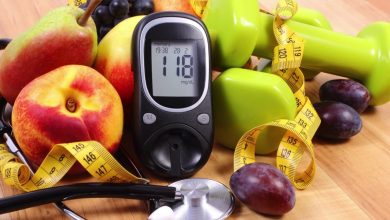Want to Lower Blood Sugar Fast? Dietitians Say This Habit Works Wonders

Managing blood sugar levels isn’t just a concern for people living with diabetes—it’s something we should all pay attention to. Whether you’re trying to prevent type 2 diabetes, manage prediabetes, or simply improve your overall energy, keeping your blood sugar stable is essential. The spikes and crashes that come with imbalanced blood sugar don’t just affect your physical health; they impact your mood, concentration, and even long-term well-being.
The good news? According to dietitians, there’s one powerful yet simple habit that works wonders when it comes to lowering blood sugar fast—walking after meals.
This may sound almost too simple, but science and nutrition experts strongly agree: making time for light movement after eating can transform the way your body handles glucose. And when combined with mindful eating, hydration, and balanced meals, it becomes a game-changer for health.
Why Blood Sugar Balance Matters So Much
Blood sugar (or blood glucose) is the body’s main source of energy. After we eat carbohydrates—whether from fruit, bread, rice, or sweets—the body breaks them down into glucose, which then enters the bloodstream.
Normally, the hormone insulin helps move that glucose into cells, where it’s used for energy. But when blood sugar rises too high, too fast, or stays elevated for too long, it can cause damage over time.
Some immediate effects of blood sugar spikes include:
- Feeling sluggish or fatigued
- Brain fog and difficulty concentrating
- Mood swings and irritability
- Increased cravings for more sugar
Long-term, consistently high blood sugar raises the risk of:
- Type 2 diabetes
- Heart disease
- Kidney problems
- Vision issues
- Nerve damage
That’s why health experts emphasize not just what you eat, but also how your body handles what you eat.
The Habit That Works Wonders: Walking After Meals
Imagine this: You just finished lunch. Instead of sinking into your chair or scrolling through your phone, you step outside for a 10–15 minute walk.
This small action has a huge impact. Here’s why:
- Walking activates your muscles. When your muscles are moving, they naturally pull glucose from the bloodstream to use for energy. This lowers blood sugar levels without relying solely on insulin.
- It slows the rise of blood sugar. Studies show that post-meal walks help reduce the glucose spike that typically happens after eating.
- It improves insulin sensitivity. Over time, walking after meals makes your body more responsive to insulin, meaning it can manage glucose more effectively.
- It’s accessible. Unlike going to the gym, you don’t need special equipment or extra time—just a short stroll.
A 2022 study published in Sports Medicine found that even 2–5 minutes of light walking after meals can significantly reduce blood sugar levels compared to sitting. This means you don’t need to commit to an intense workout; simply moving your body matters.
Expert Voices: What Dietitians Say
Registered dietitians consistently recommend post-meal walking as one of the most powerful, low-effort habits for better blood sugar control.
- Melissa Rifkin, RD, explains: “When you walk after eating, your muscles act like sponges, soaking up the glucose from your bloodstream. This is one of the fastest natural ways to lower blood sugar.”
- Erin Palinski-Wade, RD, CDCES, adds: “Consistency is key. Even a short 10-minute walk after each meal can make a measurable difference in blood sugar control, energy levels, and long-term health.”
- Maya Feller, MS, RD, CD, N, emphasizes the accessibility of the habit: “Not everyone has access to a gym, but walking is free, simple, and safe for most people. It’s an inclusive approach to better blood sugar management.”
Beyond Walking: Other Habits That Complement the Routine
While walking after meals is incredibly effective, combining it with other blood sugar-friendly habits amplifies the results.
1. Eat Balanced Meals
Pair carbohydrates with protein, fiber, and healthy fats. For example:
- Instead of plain white rice, have brown rice with grilled chicken and vegetables.
- Instead of a sugary snack, pair fruit with nuts or Greek yogurt.
Balanced meals slow digestion and prevent sugar spikes.
2. Stay Hydrated
Water helps the kidneys flush excess glucose from the bloodstream. Aim for 8–10 glasses per day, or more if you’re active.
3. Manage Stress
High stress triggers the release of cortisol, which can raise blood sugar. Try deep breathing, meditation, or yoga to keep stress hormones in check.
4. Prioritize Sleep
Lack of sleep makes the body less sensitive to insulin, leading to higher blood sugar. Strive for 7–9 hours of quality sleep.
5. Strength Training
While walking helps immediately after meals, resistance training builds muscle mass, which improves long-term glucose control.
Emotional Angle: The Real-Life Struggle
Many people feel overwhelmed when told to “manage their blood sugar.” It sounds like a massive lifestyle change. But walking after meals shows us that even small, simple choices can create big results.
Picture someone living with prediabetes, feeling anxious every time they check their blood sugar. They might think medication is the only path forward. But when they start walking after lunch and dinner, their numbers begin to stabilize. That feeling of empowerment—the idea that you can take control—brings hope.
This isn’t about perfection. It’s about progress. Choosing to walk for just 10 minutes after a meal means you’re actively protecting your heart, your energy, and your future.
Step-by-Step Guide: How to Start the Habit
If you want to make walking after meals a lasting part of your routine, here’s a simple roadmap:
Step 1: Start Small
Begin with just 5 minutes after your largest meal. Even this makes a difference.
Step 2: Build Consistency
Add a post-breakfast or post-lunch walk once it feels natural. Over time, aim for 10–15 minutes after each meal.
Step 3: Make It Enjoyable
- Walk with a friend or family member
- Listen to a podcast or music
- Take a scenic route near your home or office
Step 4: Track Your Progress
If you monitor your blood sugar, jot down your readings before and after meals, with and without walking. Seeing the numbers improve can be incredibly motivating.
Step 5: Pair with Other Habits
Use walking time to hydrate (carry a water bottle) or practice gratitude. This turns it into a holistic health ritual.
What If You Can’t Walk Outside?
Not everyone has access to safe walking paths, and sometimes the weather doesn’t cooperate. The good news? Indoor movement counts, too.
- March in place while watching TV
- Walk around your home or office
- Try a gentle 10-minute yoga flow
- Use a treadmill if you have access
The goal is movement, not perfection.
Myths About Lowering Blood Sugar Fast
There’s a lot of misinformation online about blood sugar management. Let’s clear up a few myths:
- Myth 1: Only diabetics need to worry about blood sugar.
Even healthy individuals benefit from stable glucose levels, as they improve mood, focus, and energy. - Myth 2: You need extreme diets to control blood sugar.
Simple habits, such as eating balanced meals and taking regular walks, often make the biggest difference. - Myth 3: Fruit is bad for blood sugar.
Whole fruits contain fiber and nutrients. The issue is excess sugar from processed foods and drinks, not fruit in moderation.
Long-Term Benefits of Post-Meal Walking
Adopting this one simple habit does more than just lower blood sugar in the moment. Over time, it can:
- Reduce the risk of type 2 diabetes
- Improve heart health
- Support healthy weight management
- Enhance energy and productivity
- Strengthen mental well-being through reduced stress and better sleep
Think of walking as a small daily investment that compounds into long-term health dividends.
A Habit Rooted in Ancient Wisdom
Interestingly, this idea isn’t new. In many traditional cultures, families take evening walks together after dinner. In India, it’s called a “Shatapavali”—a practice of walking 100 steps after eating. In Mediterranean countries, strolling through the village after meals is a long-standing custom.
Modern science is simply confirming what ancient traditions already knew: movement after meals keeps the body in balance.
Conclusion: Take the First Step Today
If you’ve been looking for a realistic, effective, and sustainable way to lower your blood sugar, walking after meals might just be the solution you’ve been searching for. It requires no gym membership, no fancy equipment, and no extreme sacrifices. Just you, your body, and a willingness to move.
The next time you finish breakfast, lunch, or dinner, ask yourself: “Can I spare 10 minutes to walk?”
Your body will thank you—not just today, but for years to come.
Because sometimes, the simplest habits truly do work wonders.




